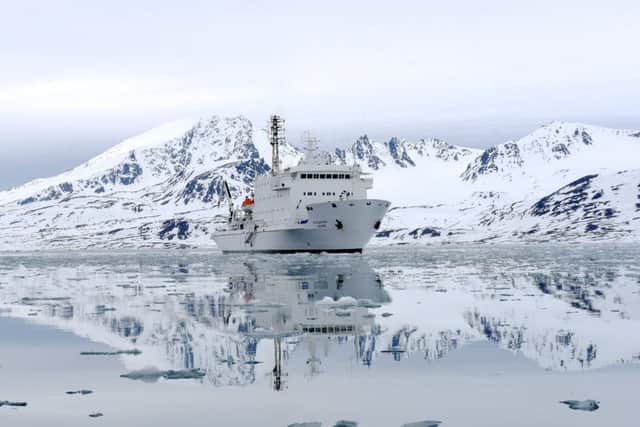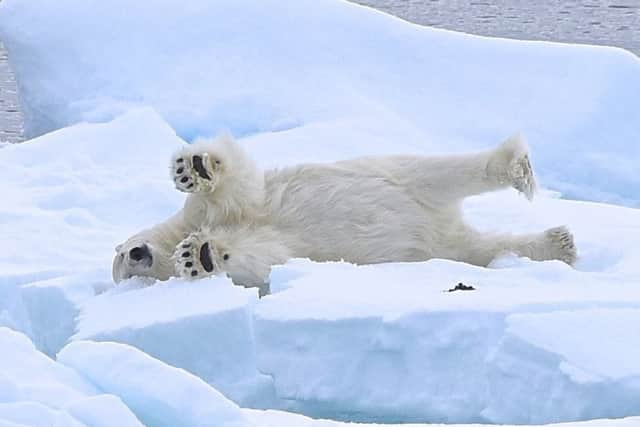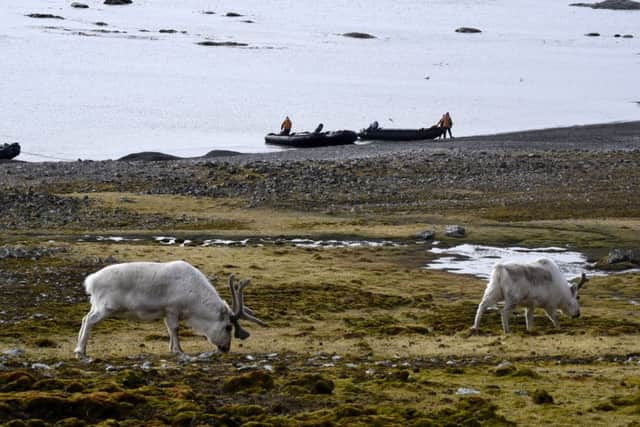Travel: Cruising in the Arctic


I was travelling on the ice-strengthened Akademik Ioffe, a working research vessel commissioned by One Ocean Expeditions for their cruises into the polar regions. This ship’s stability makes for a comfortable voyage, especially in rough seas, and its high classification allowed us to approach the edge of the pack ice in safety and comfort. The ship had carried us north from the town of Longyearbyen and along the west coast of Spitsbergen island, part of the Svalbard archipelago, as far as the ice would allow.
Norway’s collective name for its island possessions in the Arctic Sea is Svalbard (meaning cold coasts) and Longyearbyen sits at the heart of this archipelago, 707 nautical miles south of the North Pole. At the end of the 19th century it was a base for airship launches to the North Pole, and for coal mining, but today it is mostly a base for research, expedition cruises and tourism, with a few mines still in operation.
Advertisement
Hide AdAdvertisement
Hide AdWith Spitsbergen and the Svalbard archipelago under six hours away from Scotland by plane, via Oslo, the region offers the closest and most accessible extreme tundra-type topography available, a tremendous wildlife and birdlife experience, and a fascinating lesson in glaciology.


It was summer in the Arctic (winter spans from October to May, with February and March being coldest and dropping to minus 14) and the animals were enjoying milder temperatures that climb to six degrees. But still early in the season and snow covered, the Arctic landscape looked dramatic and with animals and birds just starting to breed, there was more chance of seeing bears on the ice. I’d come here in search of wildlife – polar bears, to be precise – and at this time of year the bears spend their days travelling the blinding white “fast ice” attached to the shore hunting for seals.
About 60 per cent of Svalbard’s land area is covered by ice, the glaciers being among the most beautiful of natural phenomena. The explosive sound of one calving had signalled the start of our day and we drove the Zodiac (small inflatable boat) within half a kilometre of the glacier. A 40-metre-high chunk of ice fell from the frozen mass, smashing into the water and creating a small tsunami that rocked us. If one should fall in, it’s unlikely they’d survive for more than five minutes before hypothermia set in. With the water still again, the towering ice was reflected perfectly across the mirror-like surface once more.
Most days were organised in the same way. After breakfast, guests gathered in the Mud Room, where wet-weather gear for Zodiac excursions was kept. After spending a few hours on land or cruising around in the Zodiacs exploring the shore or glaciers, we returned to the ship for lunch, and another afternoon outing into the wilds.
Aboard ship, passengers spent their time on the decks, engaged in bird and animal spotting, and there was a library, a sauna and gym and, of course, a bar, as well as a massage therapist available, for a price. There were a few presentations in the daytime hours and a recap of our day over dinner, but otherwise passengers were left to their own devices.


The guides also drove the Zodiacs, led hikes, carried arms for polar bear patrol when on land, gave specialised presentations and made sure passengers got the most from their trip.
On shore, we trekked the snow-covered hillside, and on one occasion we were treated to the sight of a close-up herd of reindeer, still wearing their white winter coats. Their eyesight isn’t great and they came quite close before running off. Nearby grazing caribou worked on gaining fat reserves for the winter, while melting ice revealed lush moss and a few delicate yellow spring flowers.
A slight and curious Arctic fox left paw prints in the snow for us to study. In search of bears we passed drift ice topped with a bearded walrus, and beautiful Arctic terns, who can fly vast distances.
Advertisement
Hide AdAdvertisement
Hide AdHours were spent out on the decks burning our retinas, looking out for bears. Once you got used to their buttery yellow colour, they were easier to spot and eventually came the shout of “Bear!” We all dashed to the starboard side of the ship where the creature lay on the ice, its long body outstretched with feet sticking out showing its thick, black pads and claws. After a good 30 close-up minutes it lumbered across the ice, jumping from floe to floe, and swam off.


One morning we were awoken early by an excited announcement that blue whales had been spotted and we witnessed five of them around the ship, slapping their flukes and side fins on the water. One came so close that I could smell its salty scent and see its blue, shimmering skin.
We explored numerous glaciers, with their earthy fresh smell, where the only sounds were the constant popping of gas bubbles from the ice underwater and cracking from deep within. Sitting in the Zodiac we admired the vast Lilliehook Glacier, whose 80-metre-high face stretched almost seven kilometres. Although we were cold, our reward was eight bear sightings – some far away, and some right under our noses. We saw Atlantic puffins and black guillemots, as well as hundreds if not thousands of little auks and large, yellow-beaked glaucous gulls.
Polar cruising is unpredictable, and you go with an understanding that nature is in control. Sometimes the weather can prevent shore landings, but knowing that this is disappointing, the crew and staff do their best to make up for it by arranging unscheduled shore visits on finer days. But whatever the weather, the realm of the polar bear will not disappoint and will leave you yearning for more.
FACT FILE


Direct booking with One Ocean Expeditions:
Spitsbergen Encounter, nine nights (not including airfare) prices from $5,695.00, www.oneoceanexpeditions.com
Swoop (UK Tour Operator): Spend ten days exploring the northwestern parts of the Svalbard archipelago in the Arctic summer from £4,343 per person, excluding flights (www.swoop-arctic.com/cruises/svalbard).
Norwegian Airlines: www.norwegian.com/uk
Where to stay in Longyearbyen: www.Gjestehuset102.no.
Where to stay in Oslo for connecting flights: Radisson Blu Oslo Airport Gardermoen (www.rezidor.com).